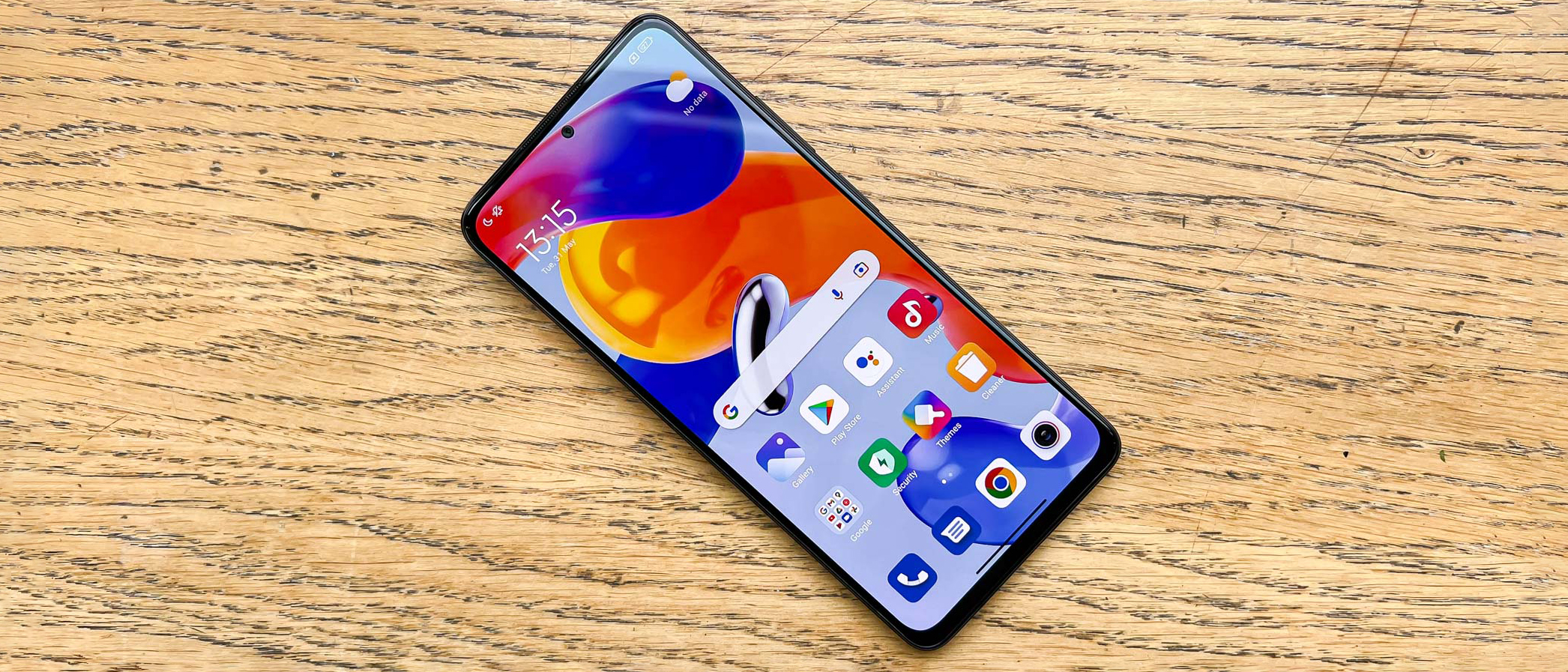Tom's Guide Verdict
Redmi has not rewritten its formula with the Note 11 Pro 5G, so we again have a budget phone that is all about its display quality and its battery. The underpowered chipset is a drawbacks compared to the OnePlus Nord 2T.
Pros
- +
Large 120Hz display
- +
Strong battery life
- +
67W charging
- +
Good value-for-price ratio
Cons
- -
Comes with old version of Android
- -
Weak performance
- -
No U.S. availability
Why you can trust Tom's Guide
Price: £319
Display: 6.67-inch OLD (2400 x 1080)
Refresh rate: 60Hz/120Hz
Rear cameras: 108MP main (f/1.9), 8MP ultrawide (f/2.2), 2MP macro (f/2.4)
Front cameras: 16MP (f/2.4)
Chipset: Snapdragon 695
RAM: 6GB
Storage: 128GB
Battery: 5,000 mAh
Charging: 67W wired
Software: Android 11 with MIUI 13
Size: 6.46 x 2.9 x 0.31 inches (164.2 x 76.1 x 8.1 millimeters)
Weight: 7.1 ounces (202 grams)
The Redmi Note 11 Pro 5G isn't a phone I can recommend wholeheartedly. But the low asking price means you should still consider it if you're not in a position to spend buckets of cash on a new phone.
Arguably the Note 11 Pro 5G's makes a mistake by not offering Android 12 out of the box, but the phone’s 67W charging speed beats the majority of similarly priced handsets. Like the Redmi Note 10 Pro, an awesome display on the Note 11 Pro 5G also makes up for a lot of flaws.
The Redmi Note 11 Pro 5G is going up against a lot of low-cost competitors like the iPhone SE,, the Samsung Galaxy A53 and Galaxy A33 and a pair of options from OnePlus (the OnePlus Nord 2T and OnePlus Nord CE). And that’s before the arrival of the Google Pixel 6a in a few months time. Here’s how this Redmi phone measures up to the competition.
Redmi Note 11 Pro 5G review: Price and availability
There’s a lone Redmi Note 11 Pro 5G model available in the U.K. and it costs £319. That's a touch more than the Nord CE 2 (£300), but it beats the price of big competitors like the iPhone SE (£419), OnePlus Nord 2T (£349), Samsung Galaxy A33 (£329) and the upcoming Pixel 6a (£399).
You can spend less on a Note 11 series phone by going for the vanilla Note 11 (£199) or the Note 11 Pro (£269), but these versions lack features like 5G. There's also the Note 11 Pro Plus 5G which offers enhanced options like 120W charging, though it’s a bit more expensive at £369. We like the Pro 5G model for having the best balance of features and price of the range, which is why we've picked this model to review in detail.
Redmi Note 11 Pro 5G review: Design
Redmi seems to have taken a leaf out of the iPhone's book by giving the Redmi Note 11 series a flat-sided design. However, with its plastic body, the Note 11 is far lighter and easier to hold than the iPhone despite sharing the iPhone 13 Pro Max’s 6.7-inch size. Redmi’s phone does feel a little bit cheap, but it's well put together, something that is not always a given for phones at this price.

Around the Note 11 Pro 5G’s flat edges, you'll find the side power button fingerprint reader, which remains effective even in a world with Face ID and under-display sensors. The fingerprint reader does seem quite sensitive though, as even just handling the phone would trigger the sensor and make it buzz in protest.
Get instant access to breaking news, the hottest reviews, great deals and helpful tips.
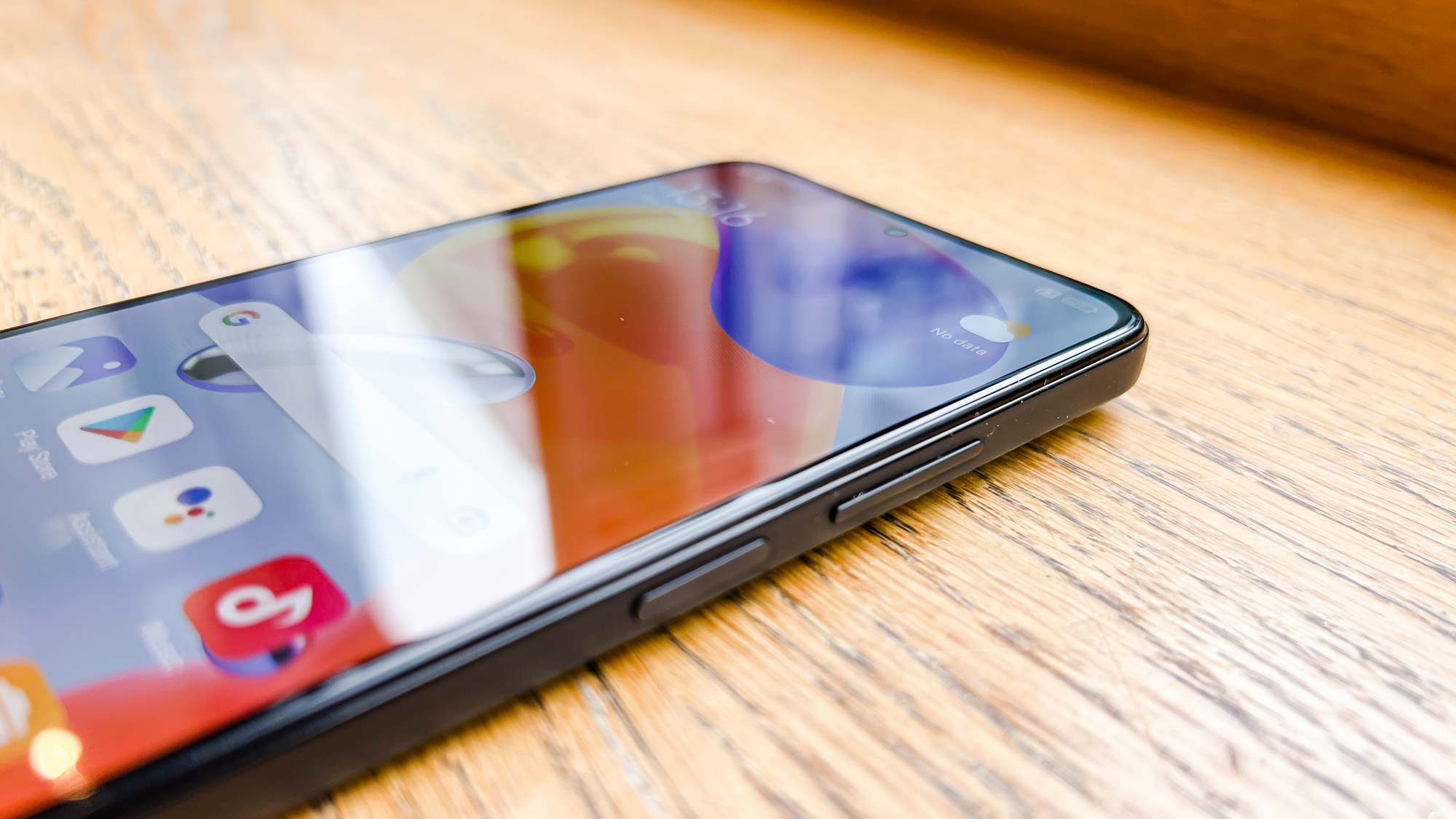
Another old-fashioned feature that Redmi's sticking with is a headphone jack, which you'll find on the top edge of the phone. That’s good news if you don't own a pair of the best wireless earbuds yet.
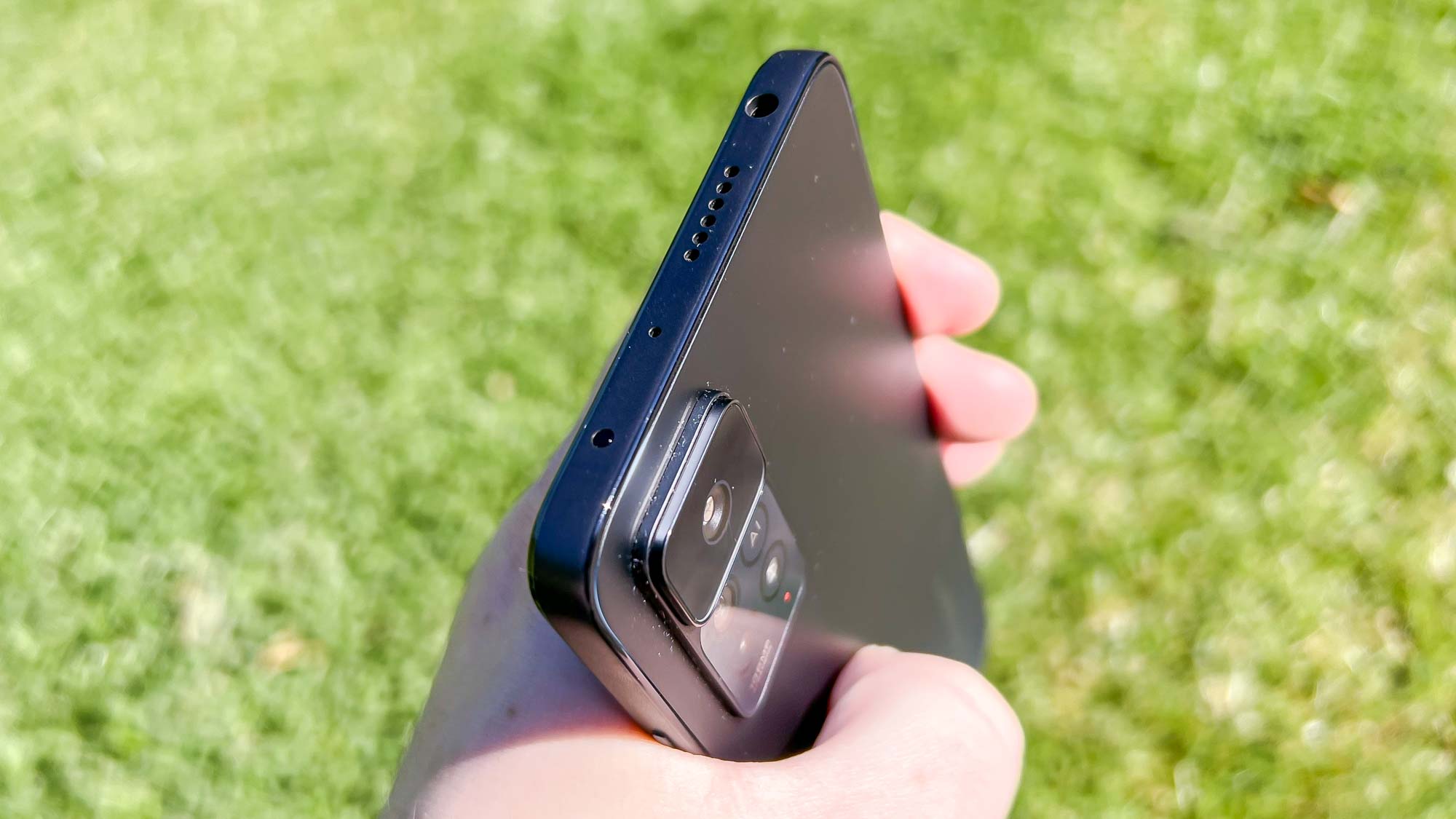
Redmi offers a trio of sensible colors on offer for the Note 11 Pro 5G: Graphite Gray, Atlantic Blue, and Polar White. There's no particular standout but the gray model we tested looks good in a modest sort of way.
Redmi Note 11 Pro 5G review: Display
With the Redmi Note 11 Pro 5G, you get an impressive 6.67-inch FHD, AMOLED display with a 120Hz refresh rate On paper, that matches up with some of the top phones on sale right now. One downside: that refresh rate isn't adaptive, so you have to manually toggle between 60Hz or 120Hz. That forces you to choose between smoother graphics or better battery life.
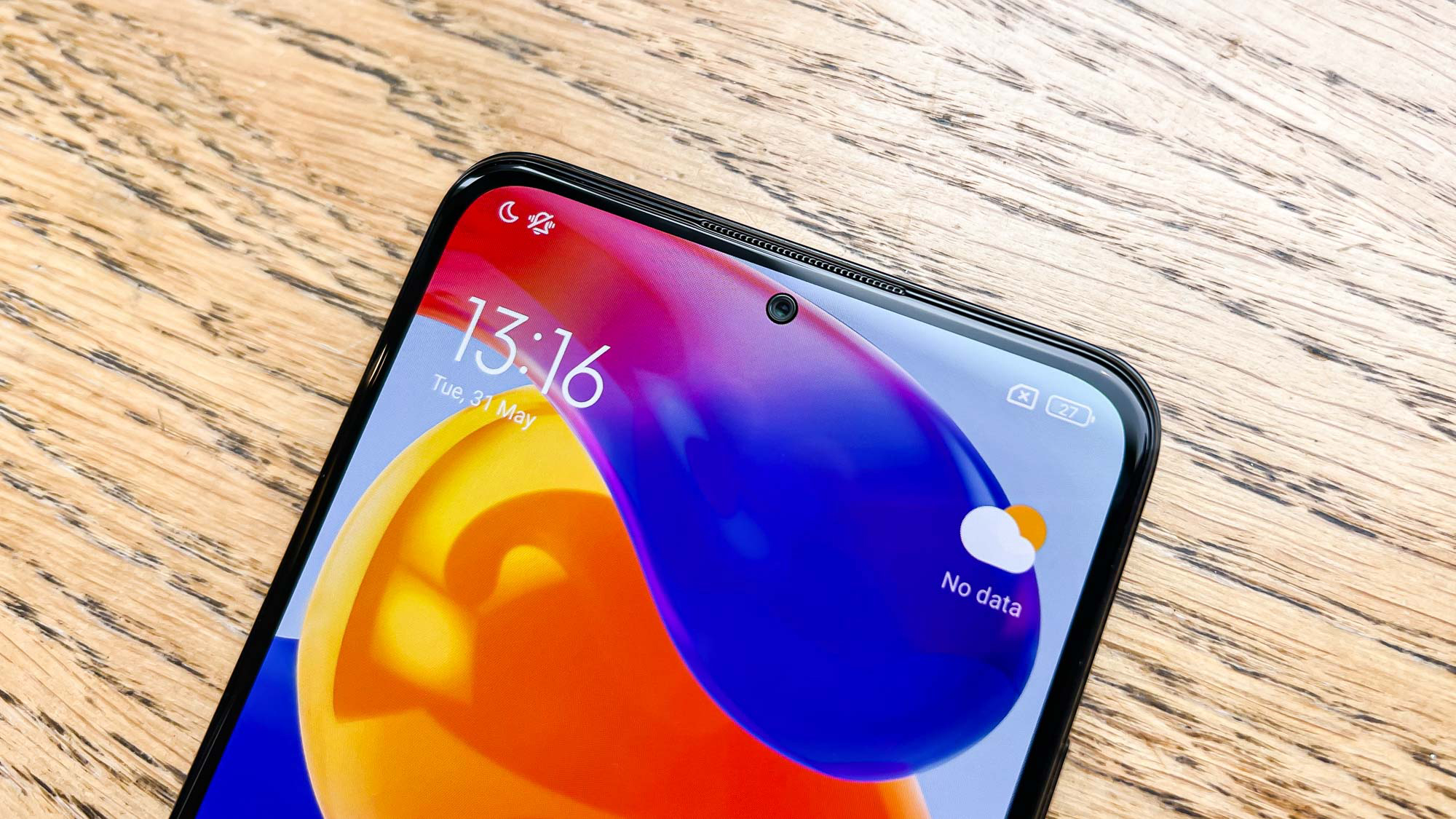
The worst part of the Note 11 Pro 5G’s display is how thick the bezels around it are. You've still got plenty of screen space, and it gives you a bit of extra space for you to grip the phone without covering the screen, but it makes the phone look a bit old-fashioned.
Redmi Note 11 Pro 5G review: Cameras
The Redmi Note 11 Pro 5G offers three rear cameras: a 108MP main camera, an 8MP ultrawide lens, and a 2MP macro sensor.
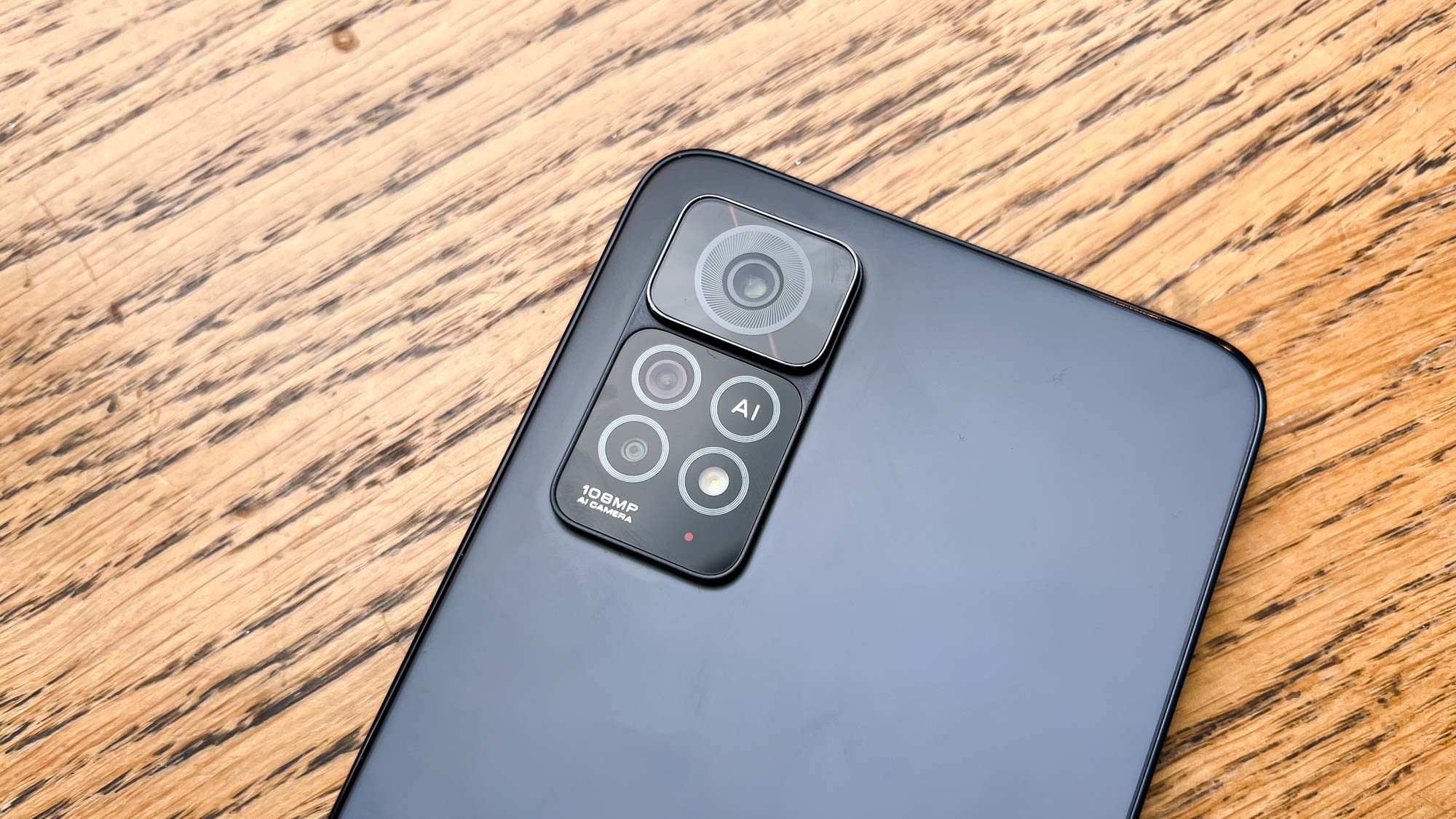
Although the Redmi has a significant pixel advantage over the iPhone SE and its lone rear camera, this shot of the front of a pub looks so much better through the iPhone's lens. What looks to be a flat grey building on the Note 11 Pro 5G's image is revealed to have all sorts of intricate textural detail, plus the shadows over the door and sign are basically invisible in the Redmi photo.
But perhaps it's unfair to compare the Redmi to a phone with a super-powerful chipset that costs another £100 more. So here's what we get if we compare the Note 11 Pro 5G to the OnePlus Nord CE 2, looking over Archway's Navigator Square.
OnePlus' cameras can sometimes pale in comparison to other phones, but it does a better job than the Realme here. I don't like how the Note 11 Pro 5G has overexposed the shot, making the white of the buildings and clouds look artificial. And although the 108MP camera on the Redmi can shoot at that full resolution, by default it takes 12MP pixel-binned shots. If you zoom in on these images, for example, the clock on the side of the pub, you can see how much more noise there is in the Redmi's shot.
We turn to the Nord CE 2 again for an ultrawide comparison of the front of a church in Archway. The contrast on the Redmi shot makes for a less pleasant overall image, but there is more detail to be enjoyed in the church's brickwork than you'll find on the Nord's.
I compared the Note 11 Pro 5G's macro camera to the Galaxy A53, which uses its own dedicated 5MP sesnor. As you'd expect from the Samsung's higher resolution sensor, you can make out more detail around the petals of the flower and the spines on its leaves. However, the color on the A53's photo is way off, and the contrast seems to have been maxxed out, making for an overall unpleasant shot. The Redmi's photo isn't great, since it's lacking the sharpness you really want from a macro image, but it's better on balance.
Finally, here's how the 16MP selfie camera compares to the 32MP one on the Galaxy A53.
The Samsung phone's rendered me in warmer colors, but I don't have a preference between the detail or overall coloration of either the Samsung or the Redmi photo. Both phones have done a decent job of cutting me out from the background too.
Redmi Note 11 Pro 5G review: Performance
The chipset is where the Redmi really cuts back to keep the phone cheaper. The chipset is a Snapdragon 695, a low-powered but 5G-capable chip that performs poorly on CPU and GPU benchmarks even compared to the middling chipset in the Galaxy A53, let alone the superpowered silicon in the iPhone SE. I’ve also added scores from the Dimensity 1300-powered OnePlus Nord 2T, which also tops the Note 11 in every test but Geekbench 5’s single-core one.
| Row 0 - Cell 0 | Redmi Note 11 Pro 5G | OnePlus Nord 2T | Samsung Galaxy A53 | iPhone SE (2022) |
| Processor | Snapdragon 695 | Dimensity 1300 | Exynos 1280 | A15 Bionic |
| Geekbench 5 (single core/multicore) | 644/1,808 | 420 / 2,672 | 745/1,888 | 1,718/4,482 |
| 3DMark Wild Life Unlimited (score/fps) | 1,202/7.2 | 4,522 / 27.1 | 2,268/13.6 | 8,352/50.3 |
| 3DMark Wild Life Extreme Unlimited (score/fps) | 352/2.1 | 1,295 / 7.8 | 623/3.7 | 1,960/11.7 |
You'll find the memory is more generous. Redmi's only selling the middle member of the full Note 11 Pro 5G lineup, with 6GB RAM and 128GB storage. It would have been nice to have the 8GB RAM version on sale here though, to get the most power possible out of the phone.
It's the same story with the storage. The basic Note 11 Pro comes with just 6GB RAM and 64GB storage. That's awfully pokey for a 2022 phone, but there are two ways around that if you don't mind spending extra. You can spec 128GB storage, either with 6GB or 8GB RAM, or use the SD card slot that will support up to another 1TB of space.
Playing Grid Autosport, I was unimpressed by how many jagged edges there were on the cars and track scenery. However I was at least glad to see the framerate stayed smooth throughout my play session, and that the Note 11 Pro 5G only heated up slightly in the top right corner of the back.
Redmi Note 11 Pro 5G review: Battery and charging
As an unofficial battery test, I played 2 hours of a 1080p YouTube video on the Redmi, and returned to find it had drained 8% of the battery. Extrapolating from this, the phone's 5,000 mAh of battery capacity would seem to be plenty to get most users through the day on a full charge.
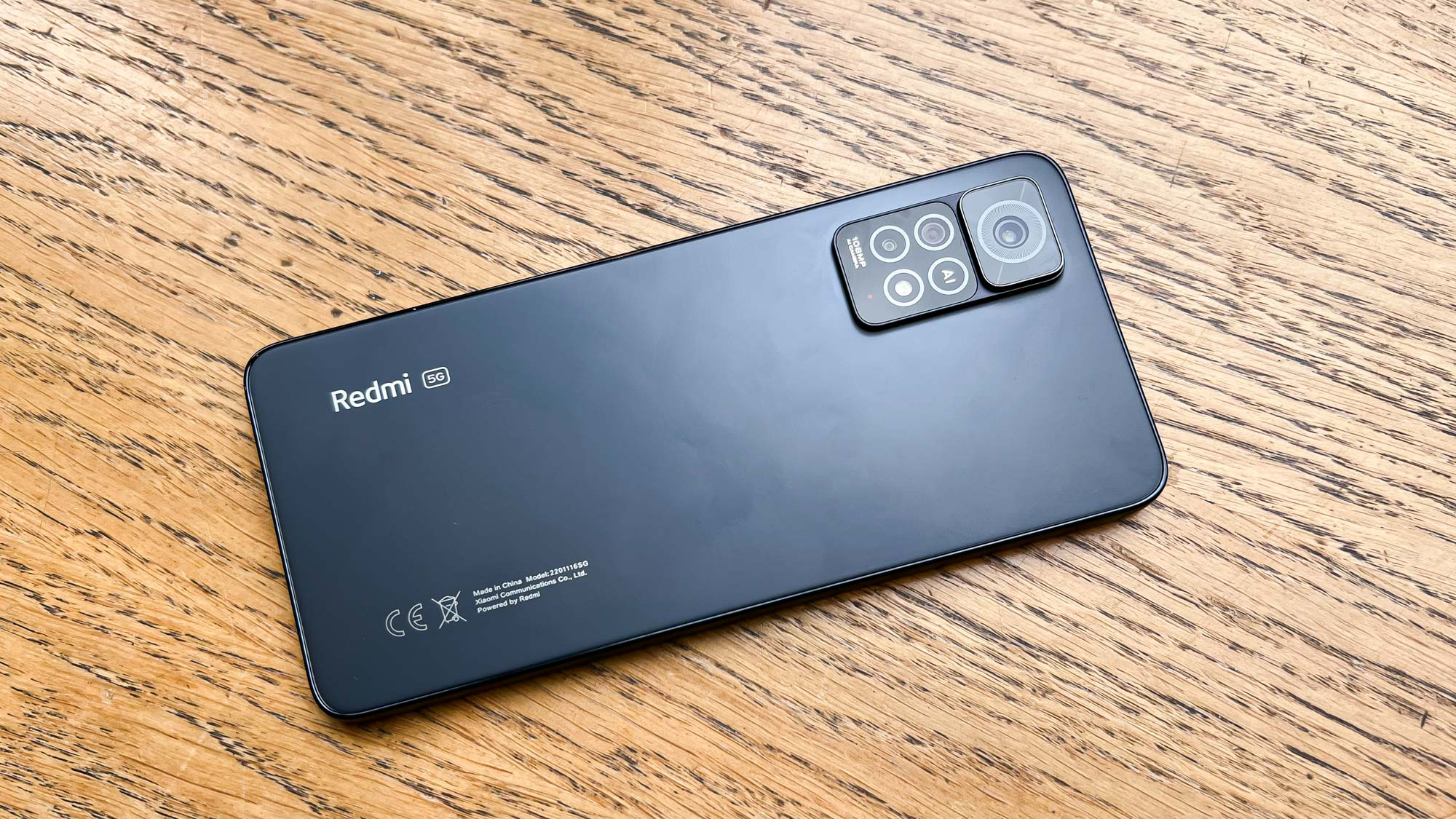
Not only has Redmi given the Note 11 Pro 5G a large battery, they'll let you charge it at 67W with the included charger. This will fill the battery to 50% in 15 minutes and to 100% in 42 minutes, according to Redmi. In contrast, the more expensive iPhone SE 61% after 30 minutes.
Redmi Note 11 Pro 5G review: Software
While using the Redmi Note 11 Pro 5G's interface and menus is pleasant enough, it's disappointing to see that the phone uses Android 11, not the more current Android 12. Despite launching this year, the Redmi misses out on the newest version of Android, putting it behind all its rivals.
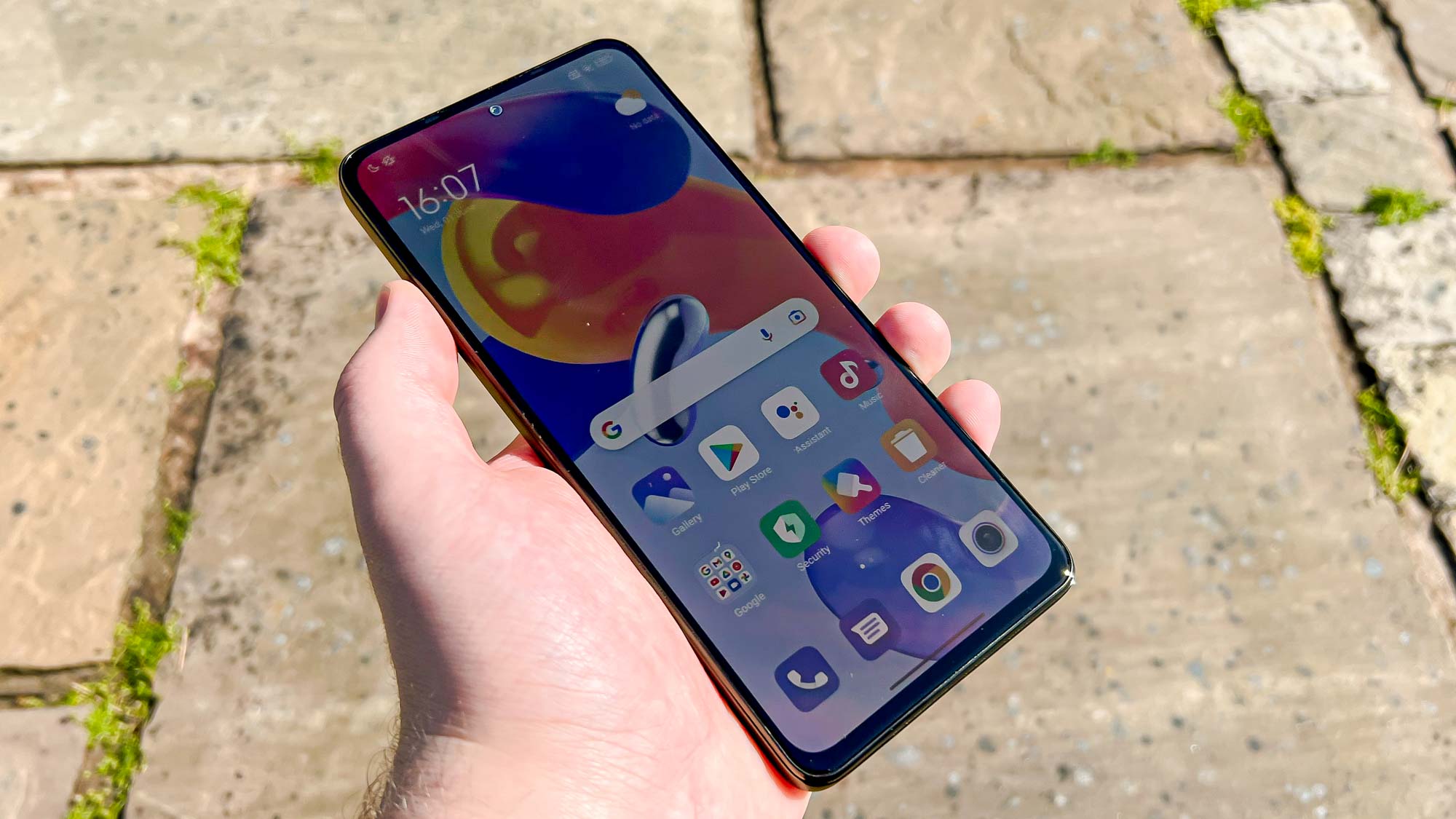
It's more encouraging to see that Redmi parent company Xiaomi is promising three years of Android updates and four years of security updates for the Note 11 series, which takes this phone to at least Android 14 once Xiaomi sorts out the relevant MIUI update. It's annoying that you'll still end up a year behind the current version of Android, but it's still enough to keep the phone fully functional for years to come.
Redmi Note 11 Pro 5G review: Verdict
Redmi offers you a large and long-lasting phone for the price with the Note 11 Pro. That combination of a good display, long battery life and turbo-charged charging will make this a practical phone for users who want to do a lot of light work tasks, web browsing or video streaming. Unfortunately, the phone lacks the CPU power for using intensive apps or games. If this is your priority, you'll probably be better off with the iPhone SE 3 or even the OnePlus Nord 2T, if you don’t want to pay up for Apple’s phone.
If you would prefer to stick with Android, the Nord CE 2 also provides good photos and can match the Redmi for charging speed, though it falls short of the quality-to-price ratio of the Redmi display. You could also wait to see how the Pixel 6a fares when it ships this summer to see if it’s worth the extra cost over the Redmi Note 11 Pro 5G.

Richard is based in London, covering news, reviews and how-tos for phones, tablets, gaming, and whatever else people need advice on. Following on from his MA in Magazine Journalism at the University of Sheffield, he's also written for WIRED U.K., The Register and Creative Bloq. When not at work, he's likely thinking about how to brew the perfect cup of specialty coffee.
